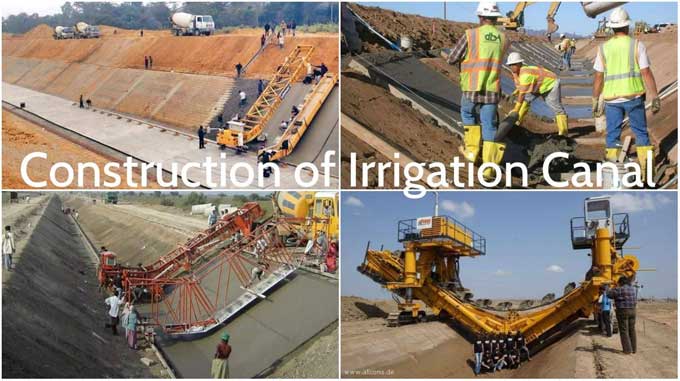
What Canal Irrigation Is like and its Advantages & Disadvantages

Irrigation systems serve a variety of purposes, including assisting in the growth of crops and plants by preventing weed growth in grain fields, suppressing weed growth in pastures, and preventing soil consolidation. The application of water artificially in agricultural fields is known as irrigation. That involves replacing rainwater with water from another source. When rainfall is insufficient, this method will use.
Define Canal Irrigation
Canal Irrigation is done through canals that transport water to the fields. Rivers, tanks, & reservoirs provide water for this purpose. Concrete, stone, brick, or any flexible membrane can construct the canals to solve durability issues like seepage and erosion.
It is possible to use canals as a source of irrigation in areas with low relief, fertile soil, and a large command area. Irrigation canals uses in Uttar Pradesh, Haryana, and Punjab, the northern plains of India.
It is difficult and uneconomic to dig canals in rocky and uneven terrain. The peninsular plateau is virtually devoid of canals. Irrigation canals exist, however, in South India's delta and coastal regions.
Types of Canal Irrigation
Perennial Canals
A perennial canal is one that is cut off from perennial rivers by building a barge across the river. There are many perennial canals in India for agriculture.
Inundation Canals
Weirs or other devices at the head of an inundation canal do not regulate water flow from rivers. In the rainy season when rivers flooded and there is an abundance of water, this type of irrigation canal provides irrigation.
Advantages of Canal Irrigation
- Un-irrigated wasteland development.
- There can be an end to dangerous droughts that impede economic growth.
- Crops can be properly irrigated when rainfall intensity fluctuates due to irregular rainfall.
- Through canals, the land is more productive per hectare than it would be with conventional watering.
- It is necessary to maintain the canals built permanently.
- Water table levels do not drop due to canal irrigation. Increasing the water level only facilitates digging wells.
- In addition to providing hydroelectricity, drinking water, fisheries development, and navigation, canals also serve other purposes.
Disadvantages of Canal Irrigation
- Water is scarce in some areas and clogged in others when there is an imbalance in the distribution process. Consequently, the soil becomes unproductive when salts and alkalis from underground reach the surface.
- In the canal, water that remains stationary promotes the growth of worms, mosquitoes, and insects.
- Sediment collects in canals due to improper maintenance, negatively affecting their capacity.
- Construction of canals requires a lot of time and economic investment. Irrigation through canals is not suitable for every situation.
Other Types of Irrigation
Surge Irrigation
The water supply of surge irrigation is pulsed on and off during planned times. Drying and wetting cycles reduce infiltration rates, resulting in a faster advance rate and better uniformity than continuous flow.
To learn more, watch the following video tutorial.
Video Source: Design Education
Ditch Irrigation
The traditional way to plant seedlings uses trenches dug out of the ground and rows of seedlings planted in them. Between each row of plants, canals or furrows dug to provide water for the plants. Canals receive water via siphon tubes from the main ditch.
Sub Irrigation
An irrigation system delivers water to the roots of plants and allows it to absorb upward. It collects and reuses water. That reduces labor costs and conserves water and nutrients. Equipping the farm is an expensive process. There is a risk that recycled water will harbor disease.
Furrow Irrigation
The furrow irrigation technique involves digging trenches or furrows between rows of crops in a field as a method of surface irrigation. In the furrows, farmers flow water that seeps into the soil and recharges the soil reservoir. Furrows are fed at a different rate.

Image Courtesy: comparesoft.com

